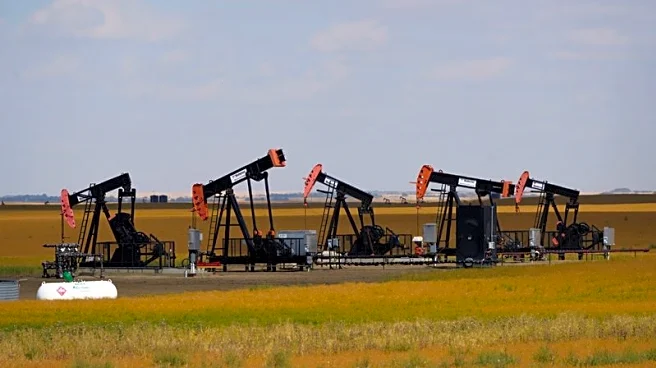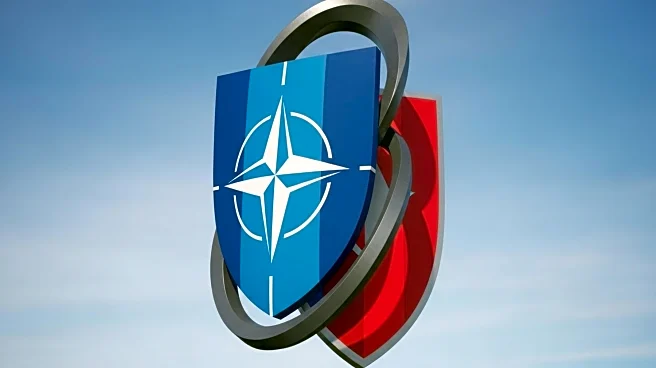What's Happening?
The OPEC+ group, which includes major oil-producing countries like Saudi Arabia, Russia, and the United Arab Emirates, is not increasing oil production as much as initially anticipated. According to recent reports, the group has only delivered about 75% of the planned production increases since April 2025. This shortfall is attributed to some members reaching their production capacity limits and others compensating for previous overproduction. The anticipated production increase was set at 1.92 million barrels per day, but actual output has been approximately 500,000 barrels per day below this target. This development could alleviate market fears of an impending oil glut, which was expected to drive prices below $60 per barrel.
Why It's Important?
The reduced increase in oil production by OPEC+ is significant for global oil markets, particularly for the U.S., which is a major consumer of oil. By not reaching the expected production levels, OPEC+ is helping to stabilize oil prices, which could remain in the mid to high $60s per barrel. This stability is crucial for U.S. industries reliant on oil, as it prevents the potential economic disruptions that could arise from volatile oil prices. Additionally, the situation underscores the limited spare capacity of many OPEC+ members, highlighting potential vulnerabilities in global oil supply chains.
What's Next?
As OPEC+ continues to manage its production levels, the market will closely monitor any changes in output, especially from key players like Saudi Arabia and Russia. The group's ability to maintain or adjust production in response to global economic conditions will be critical. Furthermore, geopolitical factors, such as the ongoing conflict in Ukraine affecting Russian oil exports, could influence future production decisions. Stakeholders, including U.S. policymakers and businesses, will need to remain vigilant to these developments to mitigate any potential impacts on the domestic economy.











